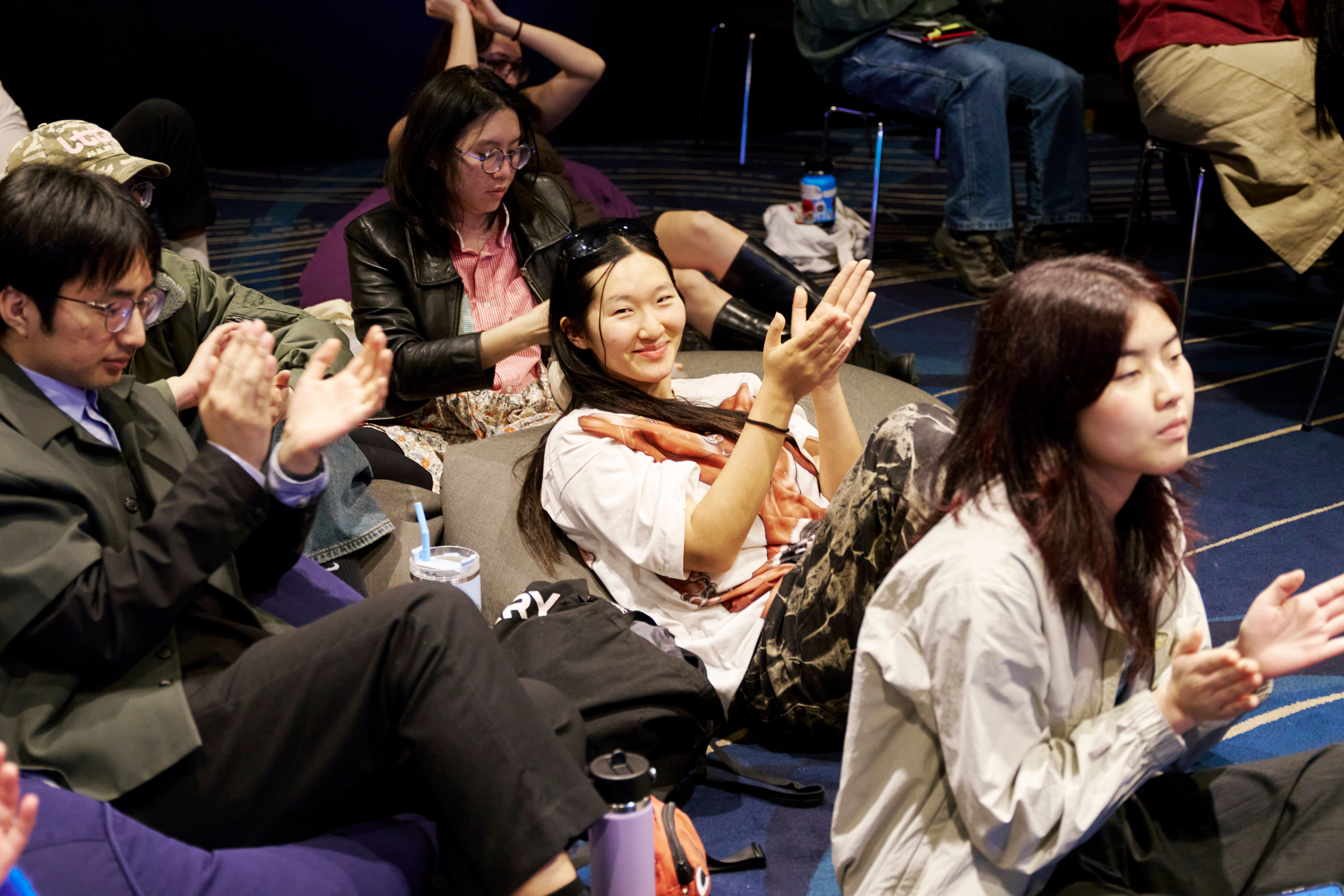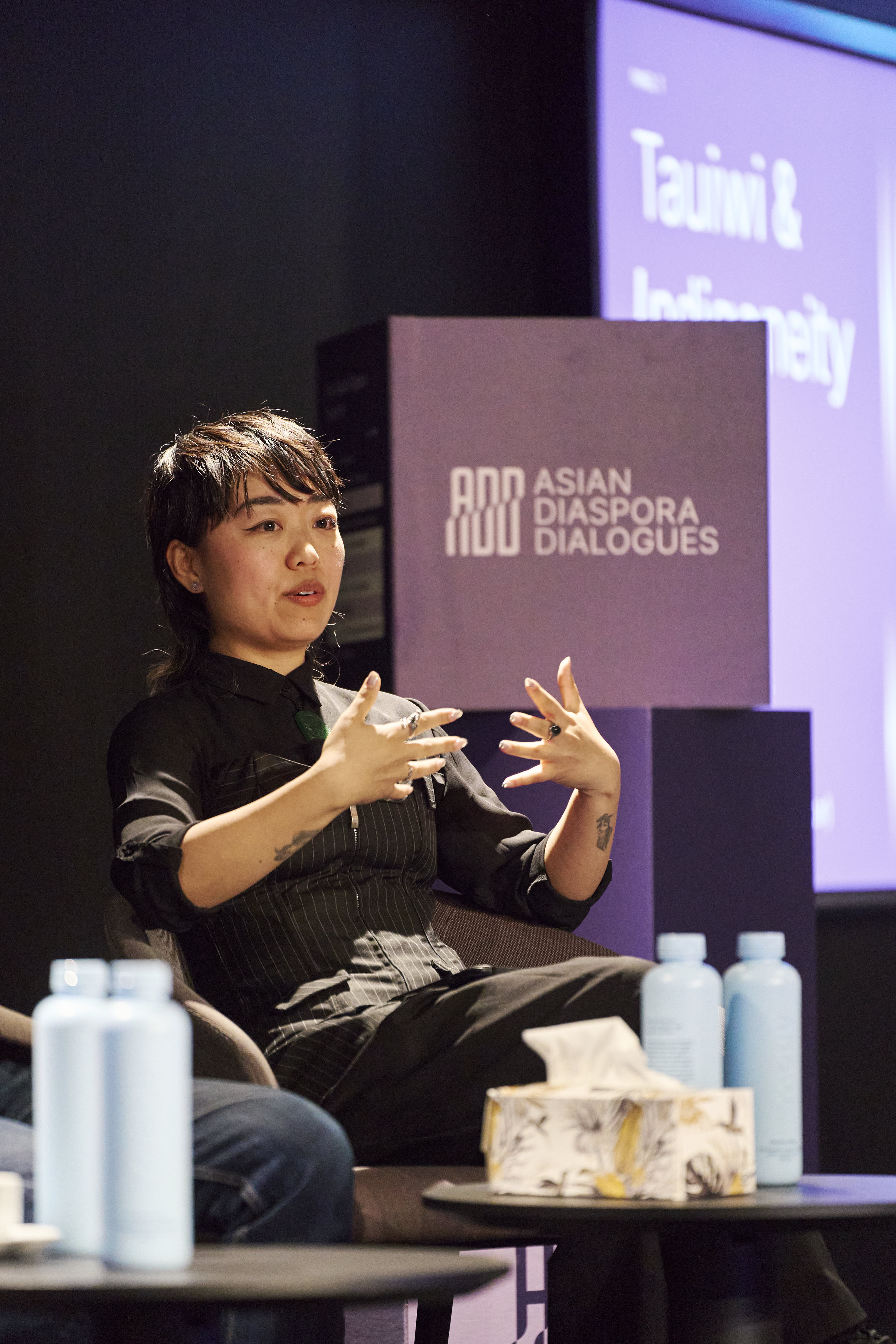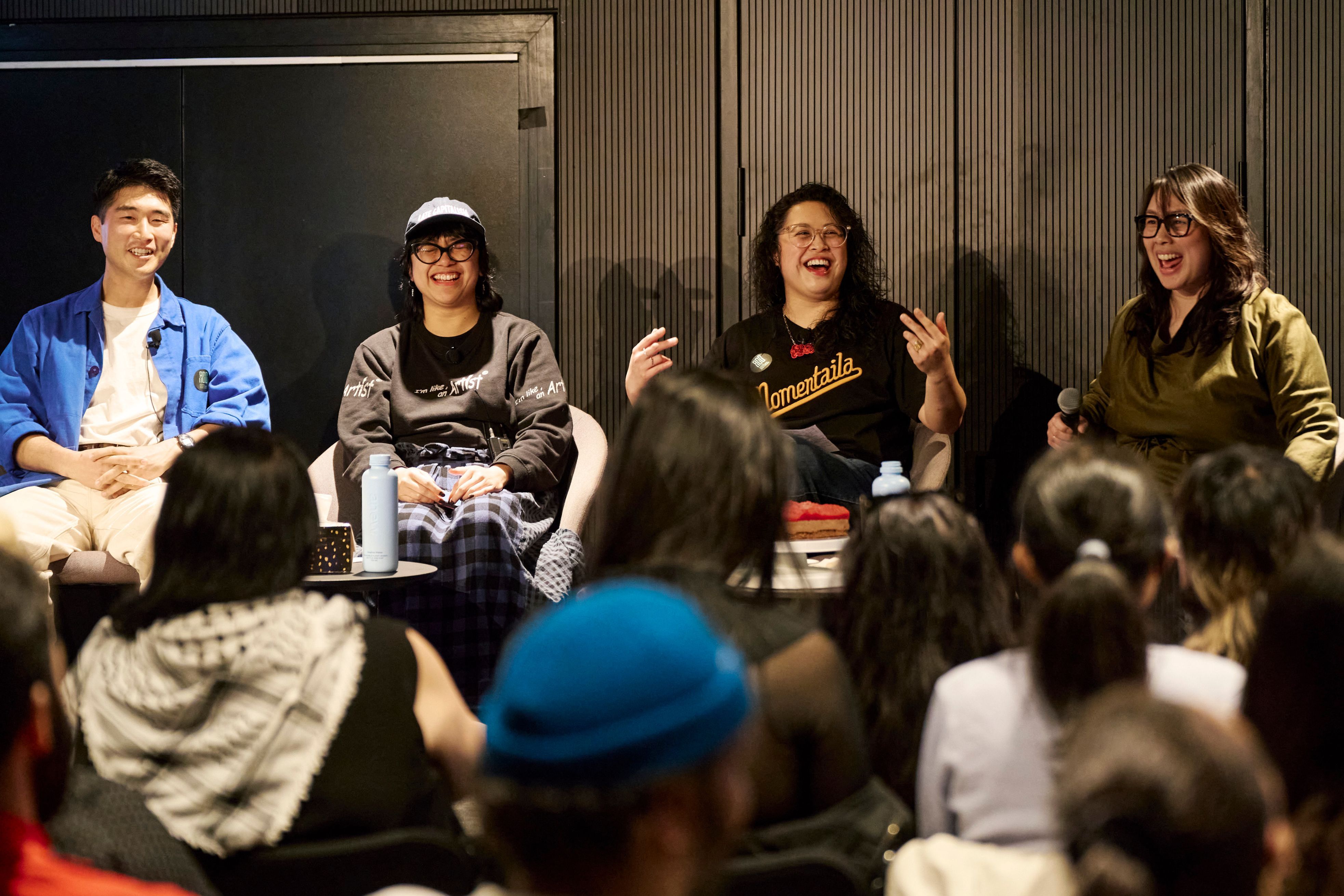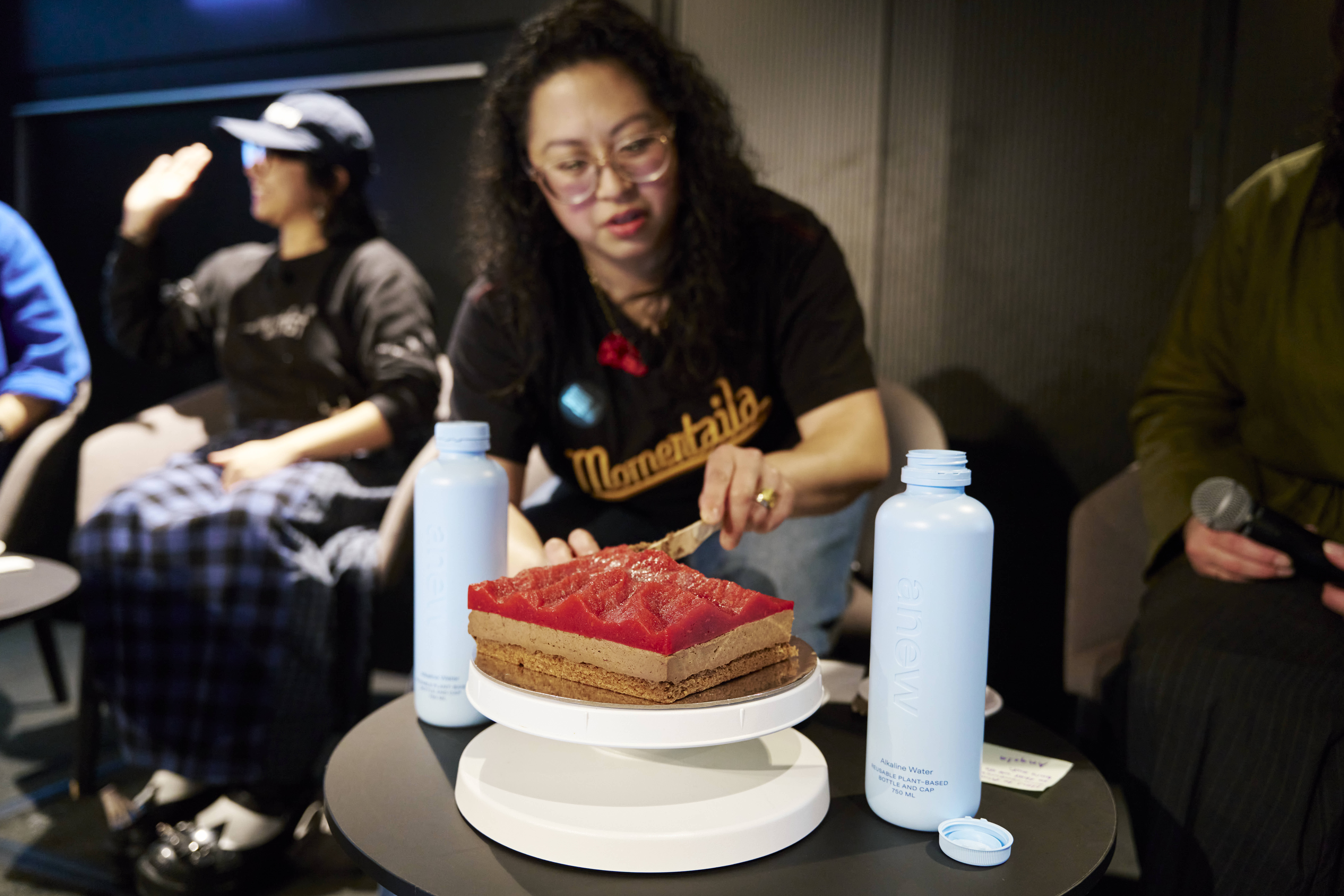Asian Diaspora Dialogues returns to Tāmaki
After a three-year hiatus, the one-day conference returned, inviting discussions on the creative sector in Aotearoa. Here’s the most important things Eda Tang heard.
It’s an arts kaupapa, but you don’t need to see yourself as an artist to have a place in the conversation. Asian Diaspora Dialogues (ADD) first emerged in Tāmaki Makaurau in December 2022, assembling 200 creative practitioners of any Asian descent to consider and talk about artistic practice, placemaking, and leadership. Three years on, the conference returned to the same room at the Aotea Centre, this time discussing tauiwi positionality, career sustainability, and sector transformation beyond representation.
Co-producer Sums Selvarajan, who works predominantly as a performing arts producer, said the first ADD emerged from the feeling that something was “fractured” after the COVID-19 lockdowns. “People don’t want to come back to the arts”, she said. But there was, and still is, a hunger for community.

Arguably, since 2022, Asian artists have become more visible to one another and to those outside of the categorisation. These connections have been captured by projects such as Past Present Futures: A Decade of Asian Aotearoa Arts, and Satellites, an ever-growing online archive of Aotearoa Asian art. However, a new challenge has emerged with the declining retention of career practitioners.
“This year has been quite sad, actually,” says Selvarajan. “We went back to check in with people who came last time, and two-thirds of them either don’t practise anymore, have left the industry, or have left the country.” When there’s a gap in knowledge and resources, events like ADD are vital for sparking new creative connections, regardless of one’s level of experience. And upon that collision of creative minds, here’s what I heard.
The key takeaways
‘Asian’ isn’t a defining term
“The term Asian is in itself a loaded, constructive, clunky, reductive identifier,” said host Jenna Wee 黄心怡 in her opening statement to the day. The sentiment echoed through conversations. Selvarajan, who gathered the room under the term, said, “The minute you have the term ‘Asian’, it’s impossible to encapsulate that within an individual, or a cross-section of individuals, because the diasporic experience in itself is vast.” Panelist Ara Alam-Simmons said that the ‘Asian’ category “erases histories and cultural perspectives and perhaps props up one or two ethnic groups within that Asian category at the expense of everybody else.”
Kadambari Gladding, moderating the panel Navigating Beyond the Opportunity, said that targeted funding rounds for underrepresented groups can be a double-edged sword. “We’re often finding ourselves applying for funding that is expected of us to prove that our stories align with our identity, that we’re telling stories that we actually see ourselves in, as far as our demographic or cultural identities go. And as much as that is helpful, it’s also deeply limiting in the sense of our own idea of who we are and how we see the world and how the world might see us.”
On the flipside, it is the term that brought the room together. In the 2022 Enter the Multiverse report, ‘Asian’ is described as a label, that while reductive in categorisation, is used by the community as “a gesture of solidarity, a mobilising tool, a strategically used identity in response to prejudice, racism and violence.”
Tauiwi positionality and allyship are not easy

Attendees from the last ADD were so eager to discuss what being tauiwi meant in arts practice in Aotearoa that it became the opening panel discussion this time around. While deeply personal and existential, the topic was massaged thoughtfully with the facilitation of filmmaker Julie Zhu.
Laying the foundation of the kōrero, she said, “as racialised tauiwi, we face certain things that Pākehā don’t. We don’t have all the privileges that Pākehā do, but in many ways, we are still settlers here on colonised land.” Owning this can be challenging, she added, when “fear of getting things wrong or taking up space might be particularly prevalent for Asian communities.”
Ellie Lim, who works for a council arts institution, was honest about her conditioning to not allowing herself to fail. “One of the ways I try to steer my team into failing fast and not being so worried about doing things wrong is to say, ‘It’s okay. We’re going to be navigated towards what is right, and then we will all know.’”
While the journey involves putting the ego aside, it also considers your capacity. Ara Alam-Simmons said that when we talk about solidarity, we fail to mention the risk that comes with it. Lim, drawing from her observations of activism in rainbow and feminist communities, said that it can be a privilege to stand in solidarity and take a risk. “You have to be of a mentally, physically, and emotionally well state to be able to do that – it’s okay to look after ourselves before we step into supporting others.”
Alam-Simmons also challenged the audience to think about inter-Asian solidarity alongside solidarity with others.
Artists’ health and wellbeing cannot be ignored

Complaints of burnout and racism continued this year. An anonymous participant posited on the live question board whether burnout and struggle were simply to be expected, and accepted as part of the creative cycle.
“It’s really, really clear that we’re not meeting the needs of Asian communities in terms of their mental health,” said Anya Satyanand, panelist and executive director of Ember Innovations. “We have to expand our view of what the mental health system is and realise that, actually, the creative sector is a very important engine for wellbeing in terms of mental health.” Satyanand said that priority and resources should be given to Asian communities, not as a nice-to-have but as “an essential intervention around mental health.”
The term ‘imposter syndrome’ also arose across the panels, to which Satyanand responded, “When imposter syndrome arrives, just remember that it’s an effect of white supremacy. It’s an effect of systems and structures that weren’t built for us.”
You don’t need to be an artist to contribute to the arts sector
While it’s obvious that the sector also comprises administration, management, research, technical, communications, and delivery roles, ADD laid down an even broader invitation. Another reason for ADD, Selvarajan says, is to find allyship across fields in a time when arts sector resources are sparse. “It’s almost as though, since COVID, we’ve all hunkered down and become more protective of ourselves.”
Panelists ranged from early-career artists to senior level arts-adjacent practitioners. Selvarajan said she strove for a balance of voices, ages and experiences in the panel selection. “The core thing about Asian Diaspora Dialogues is about tapping into one’s lived experience and only that — no presentation, no big sort of agenda, nothing.”
We have an exodus of creatives

Midway through the sustainability panel, Mariadelle "Abbey" Gamit, a queer Pinay artist and DJ, confessed that they are moving to Melbourne next week with their partner and collaborator. “None of us want to move. That’s the thing, our community is here,” they said. “The idea of moving there so I can financially make it sustainable for myself is shit.”
The discussion on sustainability, despite its multi-layered definition, really focused on individual practice. “It’s not just financial, but there’s that creative self and your art and sustaining your own person as well,” said chef and food writer Vicki Young. There was no clear answer on how to make a living from the arts, but all the panelists agreed that mutual support within creative communities was key. Jane Yonge, the moderator of that panel, asked the room to raise their hands if they would take a phone call late at night from a fellow practitioner to talk about their work. After a day of talking about burnout, still, most of the room had raised their hands.
The panel conversations were only one part of the kaupapa. Between each panel was a generously timed and generously fed break where the magic happened. I ran into people I hadn’t seen since the last ADD, friends I hadn’t known as creatives, and new faces whom I exchanged contacts with. While it was likely the panels left the audience with more questions than answers, these provocations created new connections: new friendships, tuakana/teina relationships, and interdisciplinary dreams.
Eda Tang (she/her) is a writer and community educator based in Tāmaki Makaurau. She is the editorial producer at The D*List, and the writer and co-host of Āku Hapa! Eda was previously a Pou Tiaki journalist at Stuff NZ with writing focusing on social issues, arts and te ao Māori. Her work also appears on The Spinoff, Ensemble Magazine, and Satellites.